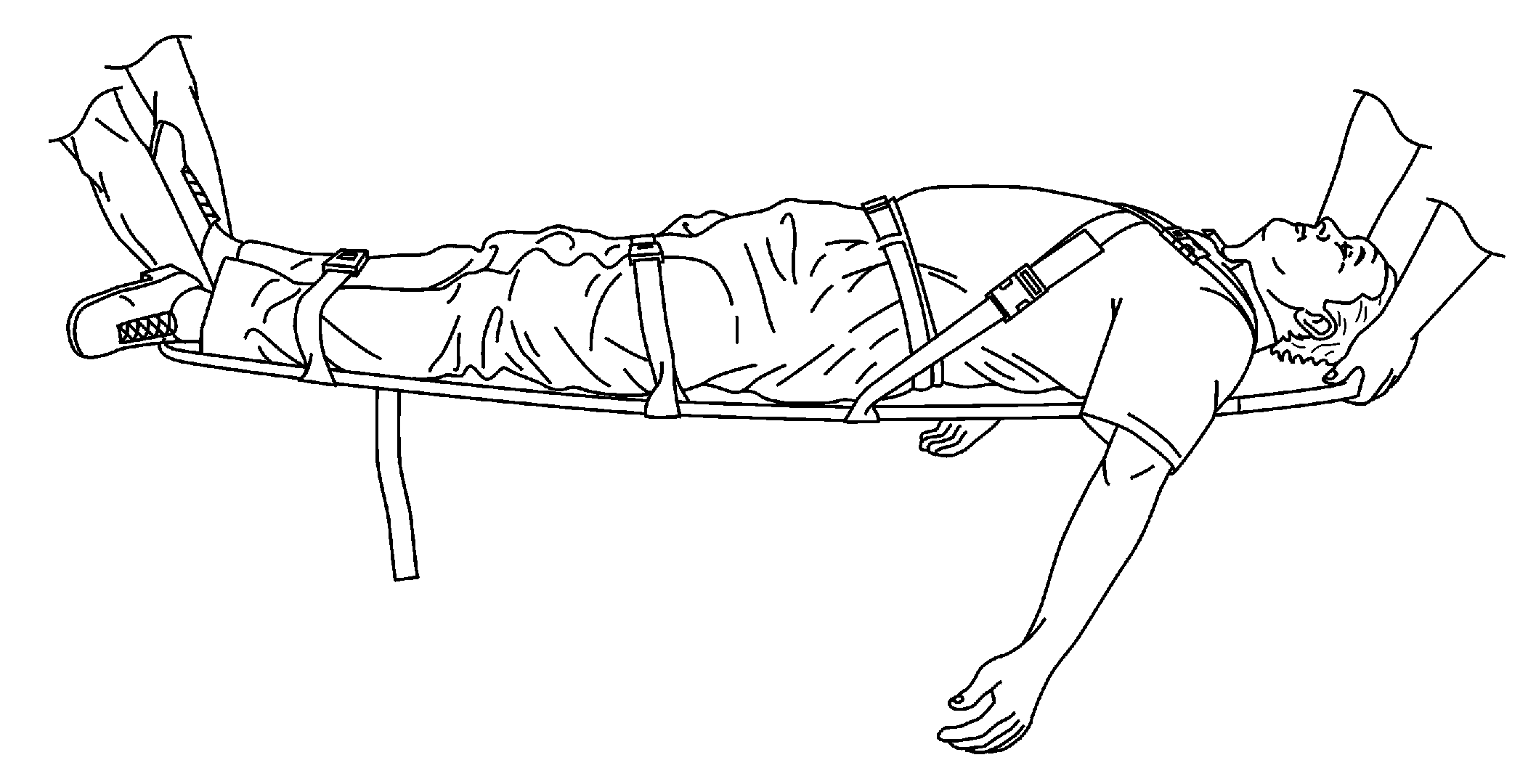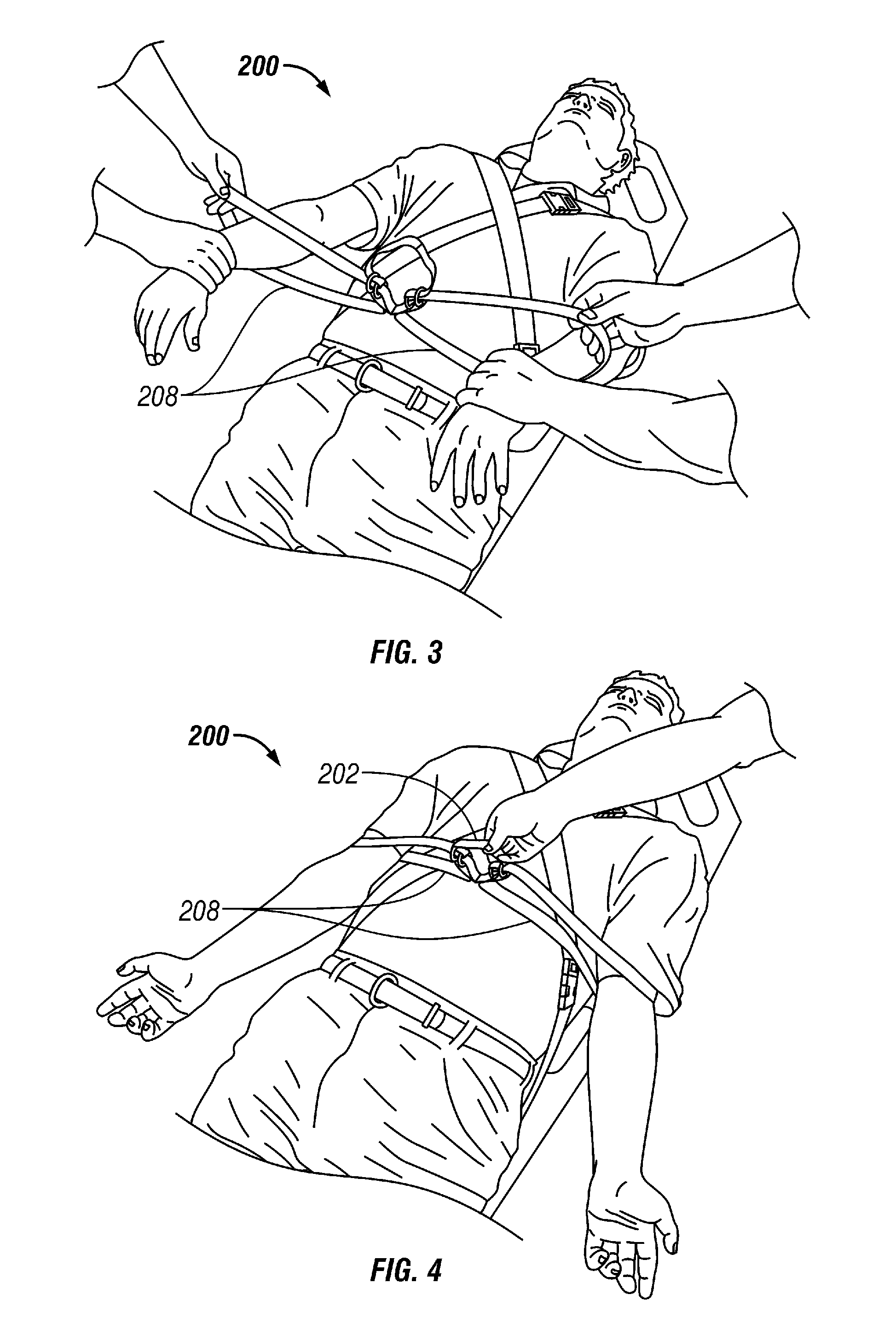Straps for restraining a patient's arms
a patient and arm restraint technology, applied in the field of patient arm restraints, can solve the problems of patient's inability to move or assist in moving on their own, ems worker's great difficulty in stabilizing and moving the patient, and iv might easily dislodge and fail, and achieve the effects of convenient installation and adjustment, low cost, and simple operation
- Summary
- Abstract
- Description
- Claims
- Application Information
AI Technical Summary
Benefits of technology
Problems solved by technology
Method used
Image
Examples
Embodiment Construction
[0032]Referring now to the provided drawings, wherein similar reference numbers represent the equivalent component throughout the several views, FIG. 2 illustrates an embodiment of the present invention configured as an arm restraint 200 device.
[0033]In this embodiment, the arm restraint 200 is made from a single length of nylon strap. However, a person having ordinary skill in the art of strap making would understand that multiple sections may also be combined to create the desired length. Other materials such as polypropylene, polyester, leather or canvas strap may also be used for the device. The length chosen for the arm restraint 200 strap should be sufficient to allow for the formation of two loops 208, one for each arm. The length should allow for enough adjustability of the arm restraint 200 to allow it to slip easily over both arms of any sized patient. In this embodiment the strap length is approximately 64 inches. This affords enough adjustment to allow utilization of the...
PUM
 Login to View More
Login to View More Abstract
Description
Claims
Application Information
 Login to View More
Login to View More - R&D
- Intellectual Property
- Life Sciences
- Materials
- Tech Scout
- Unparalleled Data Quality
- Higher Quality Content
- 60% Fewer Hallucinations
Browse by: Latest US Patents, China's latest patents, Technical Efficacy Thesaurus, Application Domain, Technology Topic, Popular Technical Reports.
© 2025 PatSnap. All rights reserved.Legal|Privacy policy|Modern Slavery Act Transparency Statement|Sitemap|About US| Contact US: help@patsnap.com



